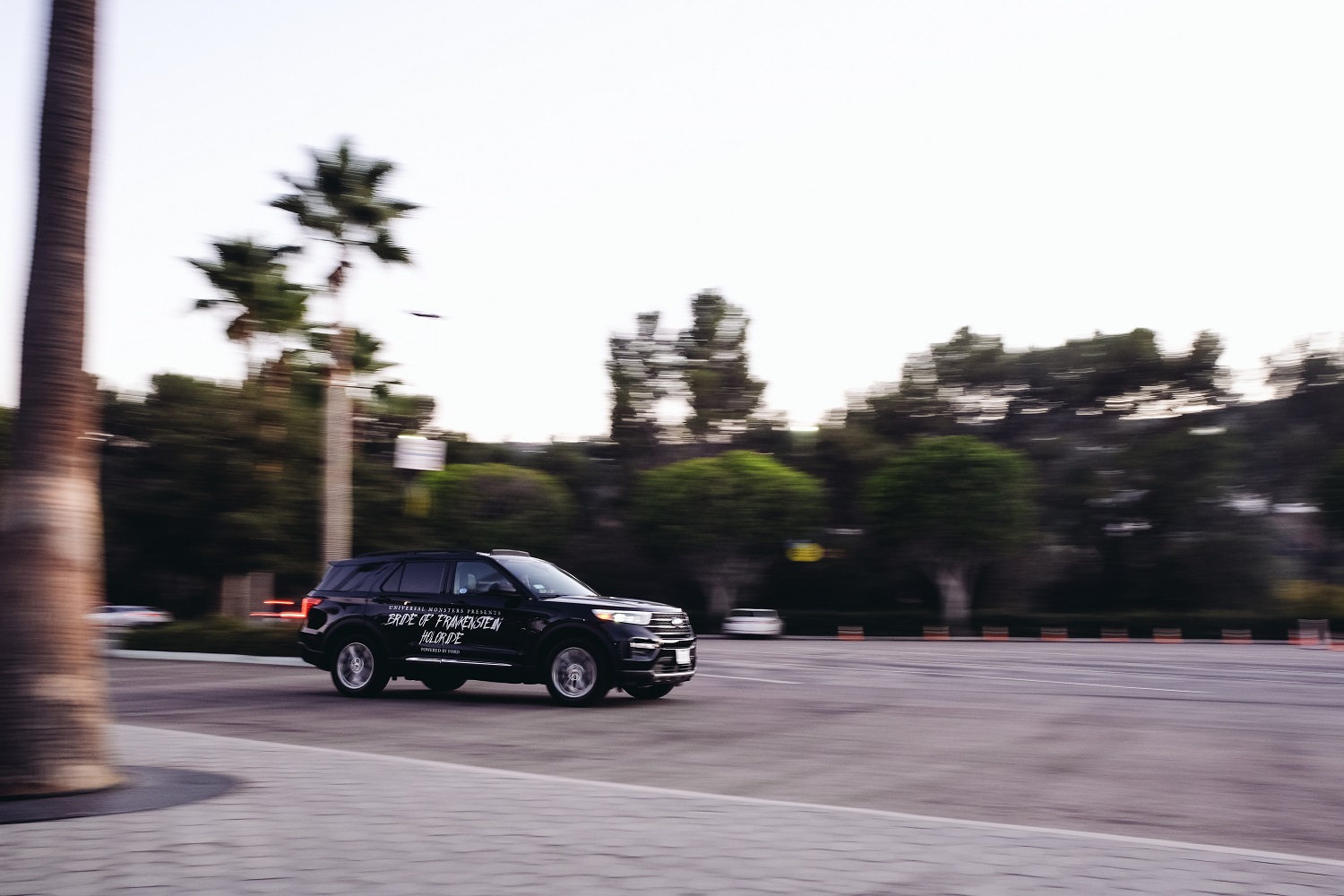Holoride teamed up with Ford and Universal Pictures to bring virtual reality-based entertainment to the 2020 Explorer. Starting on October 14, members of the general public who visit Universal Pictures in California will have the opportunity to travel through an immersive experience based on The Bride of Frankenstein.
Digital Trends got a media-only preview of Holoride’s entertainment experience during CES 2019. We sat in the back seat of an electric Audi E-Tron and shot at alien spaceships as the SUV drove around a closed track. The firm is still working with Audi, but its partnership with Ford marks its first attempt at bringing the technology to the masses. The basic experience is the same regardless of the type of car it’s installed in. Riders hop in, make themselves comfortable, put on a set of virtual reality goggles, and pick up a joystick-like device. The software takes care of the rest.
The Explorer’s navigation system feeds data about the route it’s on to Holoride’s software, while the onboard computer provides information like the steering angle, whether the car is accelerating or braking, and the G-forces going through the cabin. The immersive experience builds itself by taking into account where the car is located, its final destination, and how fast it’s going. Universal Pictures hasn’t released images of the game yet, but it explained the goal will be to defeat virtual monsters and avoid obstacles while delivering an important message to Frankenstein.
Holoride hopes to bring this technology to the market in the not-too-distant future. It might appear on your next car’s list of options, or you might be able to buy a VR kit directly from the manufacturer and plug it into your vehicle. The firm explained it’s not quite ready to release the feature to the public, so it’s leveraging its partnership with Ford to gather data from future customers about what they look for (and, significantly, don’t look for) when it comes to in-car VR.
You can hitch a 10-minute ride in the Bride of Frankenstein-themed Explorer by reserving a spot online, or by simply waiting at the designated pickup location at Universal CityWalk. Keep in mind you might need to stand in line if you don’t put your name on the waiting list ahead of time. Rides are available between 12 and 8 pm on October 14, 15, 16, 21, 22, 23, 28, 29, and 30, and every day between November 4 and 9.
Universal Pictures noted riders must be at least 13, and those under 17 need to be accompanied by an adult. It’s asking those with a pacemaker, folks who get motion sickness, claustrophobes, and people with a medical sensitivity to strobe effects to watch from the sidelines, because the ride might make their condition a lot worse.
Editors' Recommendations
- Ford recalls nearly 1.9 million Explorer SUVs over safety issue
- I took a VR Holoride through Las Vegas in the back of a ‘67 Cadillac
- Have an unsupported PC? Windows 11 has a message for you
- 2021 Toyota Highlander vs. 2020 Ford Explorer
- Iconic music venue will present live gigs you can watch in VR from your home








